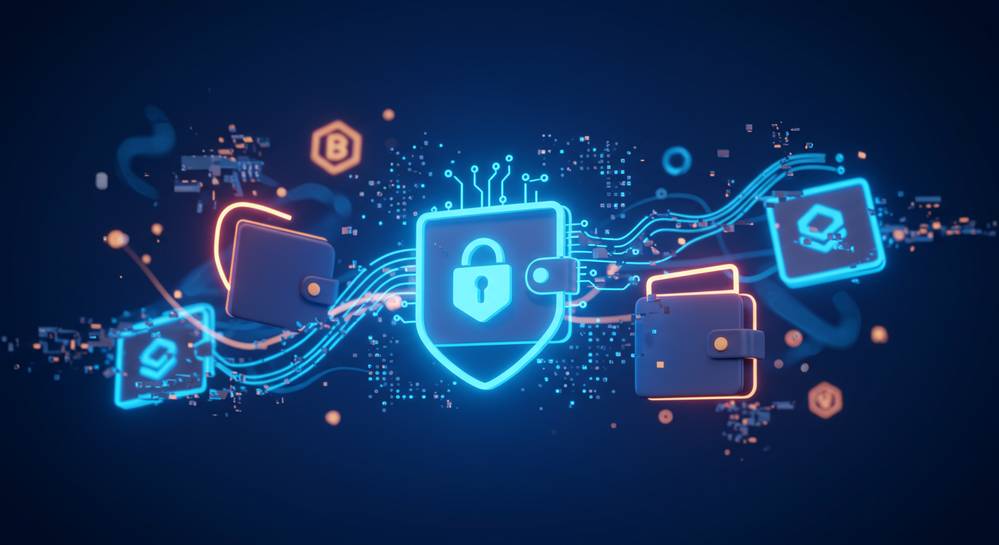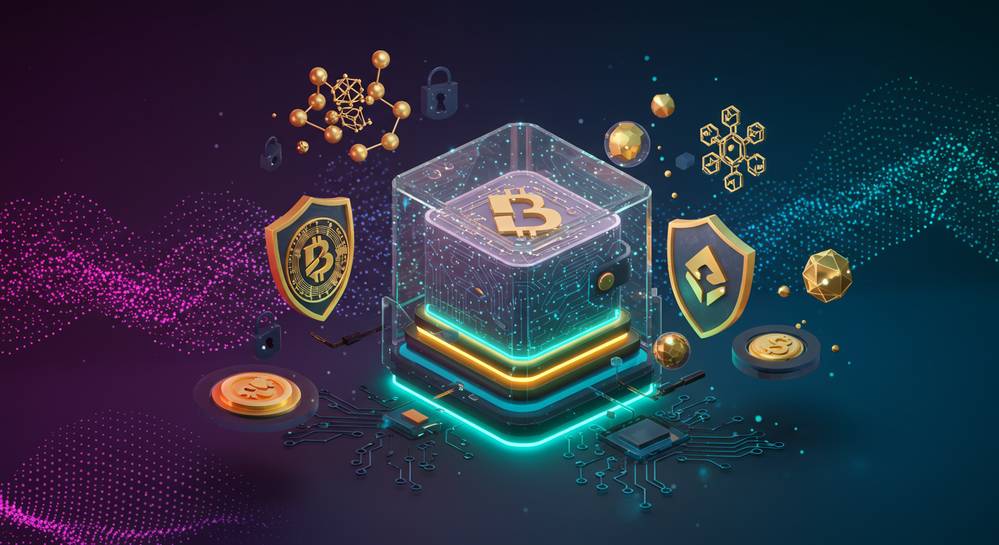Best practices for crypto wallet security are a must in a world where digital currencies talk the talk, but hackers walk the walk. My blunt take? In the rush for digital gold, you can’t afford to dig your own financial grave. It’s about keeping your virtual treasures locked tight, with you holding the only key, not someone with sticky fingers. Let’s decrypt the secrets to bulletproofing your wallet and leaving hackers in the dust—because when it comes to your money, only the best defense will do.
Understanding the Essentials of Crypto Wallet Security
The Importance of Private Key Protection
Think of your private key like a super-secret password. It’s the key to your crypto wealth, so you must keep it safe. Never share it. Not even with close pals. If someone gets it, they can take your crypto. Keep it hidden and safe, always.
Identifying Hot Wallet Risks and Using Secure Networks
Hot wallets connect to the internet. This means they face more risks. Hackers love to target them. Staying safe means using secure networks—only trust home Wi-Fi or networks you know are safe. Never use public Wi-Fi for your wallet. It’s risky and can lead to theft. Make sure to double-check links you click on. Don’t trust, always verify. And remember, always keep your wallet software up to date. This guards you from many potential harms.
Fortifying Access: Hardware Wallets and MFA
Hardware Wallet Advantages and Set-Up
Think of a hardware wallet like a safe. It keeps your digital gold – crypto – locked away. These small devices store your private keys offline. So, they’re out of reach from online thieves. Even if your computer catches a nasty virus, your assets stay safe.
Setting up a hardware wallet is easy. First, you choose a trusted device. Look for ones with a solid security record. Next, follow the step-by-step guide that comes with it. This will walk you through the setup process. Usually, you’ll create a new wallet, jot down the recovery phrase, and maybe set a pin.
Hardware wallets are like having VIP security for your crypto. They’re a must for long-term storage.
Multi-Factor Authentication for Wallets and Its Implementation
Now let’s beef up security even more with multi-factor authentication (MFA). This is a lock with more than one key. You need two proofs to get into your wallet. One could be something you know, like a password. Another could be something you have, like your phone.
To set it up, go into your wallet’s security settings. Choose the MFA option. Then link it to something you’ll always have on you, like your fingerprint or your phone. Apps like Google Authenticator work great for this.
Always remember, the more layers, the better. It’s like wearing five coats in winter. It may seem like a lot at first, but it keeps you super warm—or, in this case, super safe.
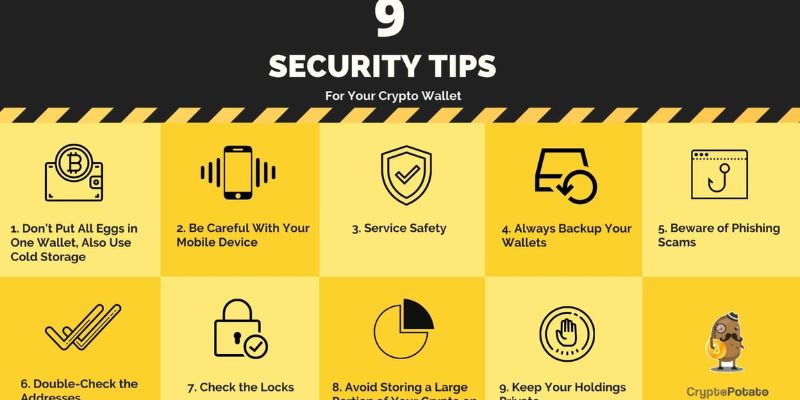
Strategic Backup and Recovery Measures
Backup Strategies for Wallets and Passphrase Memorization Techniques
Keeping your crypto safe is like guarding a treasure. Use backup strategies to make sure you never lose your digital gold. Backup means copying your wallet’s info so you can get it back if lost. Remember, never store backups online or where others can find them. Paper or metal backups can save your skin; ink won’t fade, and metal won’t burn.
Now let’s chat about passphrases. These are secret words that lock your crypto away from thieves. You must keep these words in your head. Or write them down, but never on your phone or computer. Make these words something you can remember. But don’t make it too easy, or bad guys might guess it.
Wallet Recovery Planning and Secure Password Generation
Planning for recovery is like having a map in case you get lost. Make a plan for how you’ll get your crypto back if something goes wrong. Think of who can help you and how you’ll prove the crypto is yours. Make sure this plan is solid and checked often.
Creating strong passwords is key. Use a mix of letters, numbers, and symbols that only make sense to you. Don’t use your birthday or your pet’s name. Change these passwords often to keep your wallet like a fortress. Teach your family these steps so they can help keep the treasure safe.
Remember, staying safe in crypto is a quest that never ends. Keep learning and stay smart to protect your digital gold.
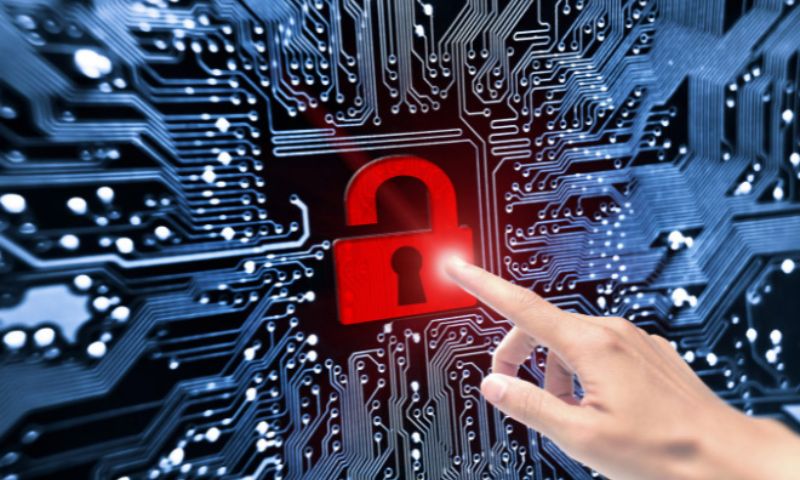
Safe Crypto Practices: Avoiding Scams and Ensuring Transaction Security
Safe Transaction Habits and Avoiding Crypto Scams
Let’s talk about staying safe. When you trade crypto, think of it as moving gold. Would you let someone you don’t trust near your gold? No! The same goes for crypto. Use known exchanges for trades. Big names are safer. They watch out for sneaky scams.
Scams are everywhere, like wolves in sheep’s clothing. Avoid dodgy deals and too-good-to-be-true offers. “Send a little, get a lot back?” Sounds fishy, right? If it’s suspicious, stay away. Steer clear of links from unknown folks. They could be traps. Check twice before you click thrice.
Your keys are your kingdom. If someone steals them, game over, they sweep your coins! Keep them safe. Protect them like the crown jewels. Passwords too. Make them like puzzles, hard to solve. Never share them, not even with pals.
Look, someone might say they’re from support. They want your keys to ‘fix’ something. That’s a trick. Real support never asks for keys. Always question. Double-check who’s asking. Use the website’s official contact points.
A tip? Update your wallet. It’s like adding stronger locks to your doors. When there’s a new version, get it. It’s packed with the latest shields against hackers.
Using Trusted Exchanges and Updating Wallet Software
You’ve got coins in your pocket (well, digital ones). Where to do business? Use trusted exchanges. How do you know they’re legit? Research. Go where the crowd goes. More users, more trust.
Updates? They’re your best buddy. With an outdated wallet, you’re riding a tricycle in a car race. You want that edge. Fresh software closes gaps that the baddies could poke through.
Cold storage or hot? If your stash is hefty, go cold. It’s like a vault. Hot wallets are easy to open, so just keep what you spend there. Imagine a wallet in your back pocket. Do you keep all your cash there? I hope not!
Two-fact-what? Two-factor authentication. It’s a must. It’s an extra bolt on the door. Someone swipes your password? They still can’t get in. They need that second key, and they don’t have it.
Bottom line: With coin, stay sharp. Keep things updated and verified. Do these, and sleep well knowing your digital gold is safe and sound.
In this post, we learned key ways to keep crypto wallets safe. You learned to guard your private key and the risks of hot wallets. We talked about hardware wallets and using many steps to check who you are. You know now to back up your wallet and make strong passwords.
Ending on a strong note, remember to stick to safe ways to do crypto stuff. Stay away from scams and always use trusted places to trade. Keep your wallet’s software fresh with updates. If you keep these tips in mind, you’ll step up your security game and protect your digital cash. Stay safe and smart in the crypto world!
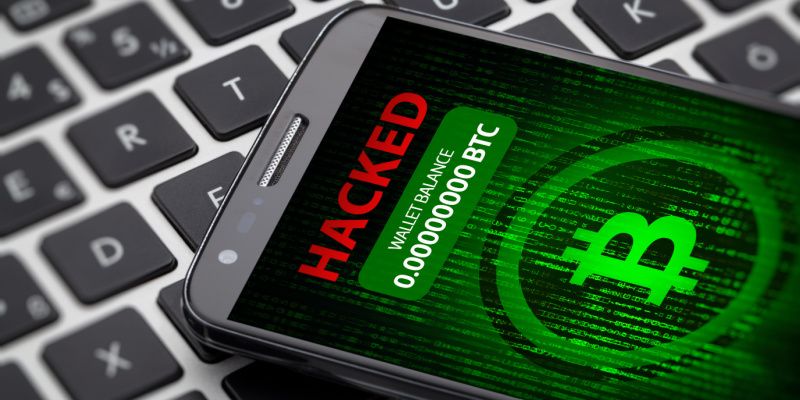
Q&A :
What are the top strategies for ensuring my crypto wallet is secure?
Secure storage of cryptocurrencies is a top priority for any digital asset holder. To maximize protection, employ a multi-faceted approach that includes the use of hardware wallets, which store private keys offline, reducing the risk of hacking. Always keep your software updated to the latest version, as updates often contain security enhancements. Additionally, utilize strong, unique passwords and consider multi-factor authentication for an extra layer of defense. Regularly back up your wallet, but ensure these backups are kept in secure locations.
How can I protect my crypto wallet from unauthorized access?
Protecting your crypto wallet from unwarranted access is crucial. Begin by activating two-factor authentication (2FA) for an additional security checkpoint. Be conscious of phishing attempts—never reveal your private keys or recovery phrases to anyone. Educate yourself on the latest security threats and remain vigilant about the sources requesting your information. Incorporate strong, complex passwords and change them periodically. For extreme security, consider using a dedicated device for your crypto transactions.
Can updating the wallet software help in enhancing security?
Absolutely, maintaining the latest version of the wallet software is pivotal for security. Developers routinely address vulnerabilities and introduce security advancements through software updates. Outdated software can be an easy target for cyberattacks, so by keeping your wallet updated, you minimize risks. Set up automatic updates where possible, or regularly check for new versions to ensure you’re not missing out on critical security improvements.
What role does backing up my crypto wallet play in security?
Backing up your crypto wallet plays a significant role in security and recovery. Should your device be lost, stolen, or damaged, backups allow you to restore your wallet and access your funds. It’s imperative to back up all components of your wallet, including the private keys and any recovery phrases. These backups should be stored in multiple, secure, and possibly geographically separated locations. Encrypting your backup files also adds a layer of security against unauthorized access.
Why is it important to use a strong and unique password for my crypto wallet?
Using a strong and unique password for your crypto wallet is critical as it’s often the first line of defense against digital threats. A robust password should be lengthy and include a mix of letters, numbers, and symbols. Avoid common words or easily guessable sequences. Each wallet or service should have its unique password to prevent a single breach from compromising multiple accounts. Password managers can assist in generating and storing complex passwords securely. Remember, the strength of your password can mean the difference between safe assets and an irreversible loss.

